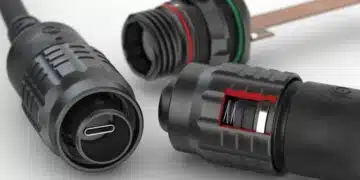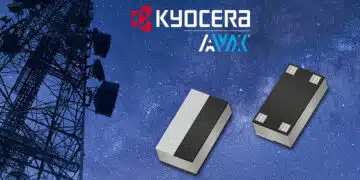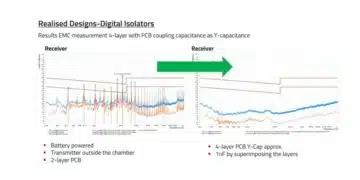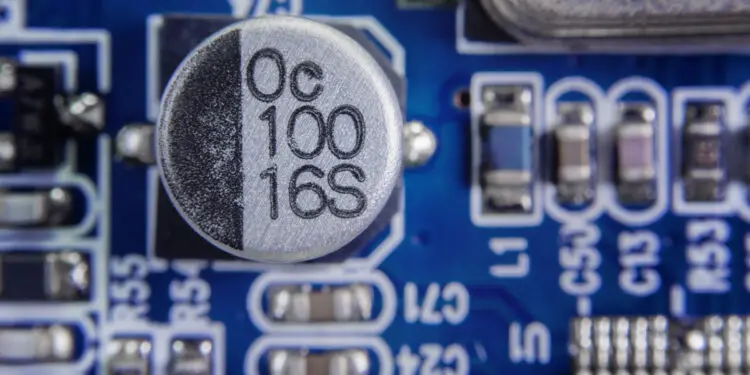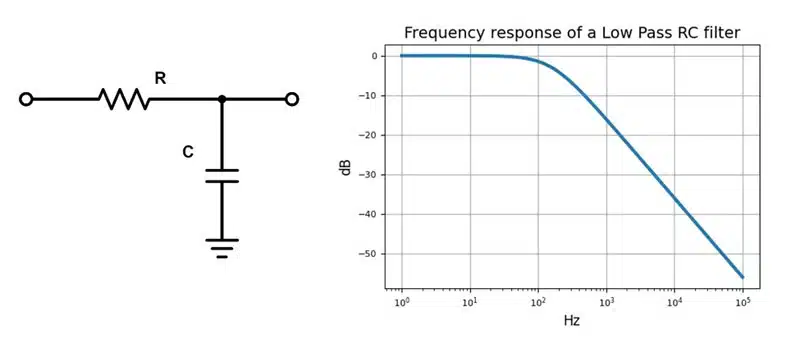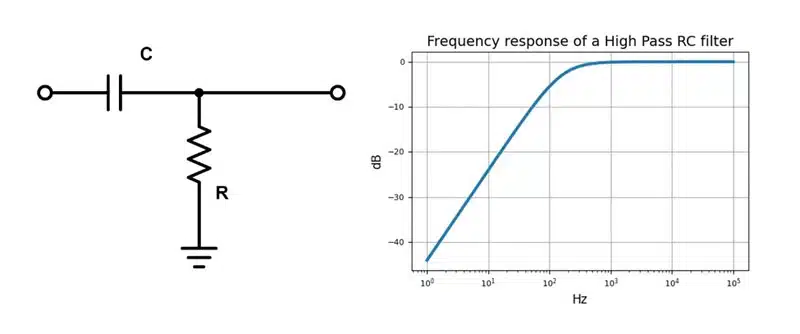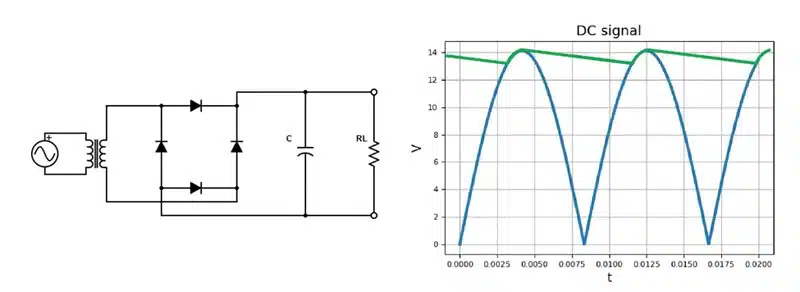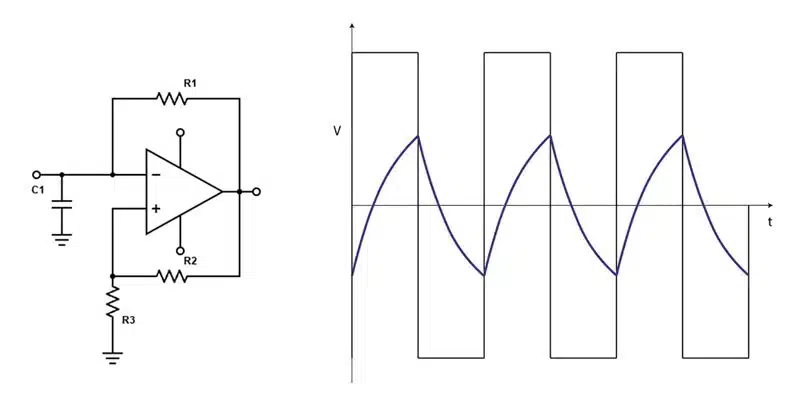This article explains very basic definition of What is a Capacitor ?, its main application and technologies.
Capacitor Definition
Capacitors are passive electrical components to store electric energy
A capacitor is made from electrical conductive electrodes that are separated by an insulator. The insulating layer is called a dielectric. Although all capacitors share the same basic principle components, the material choice, configurations and features can vary widely.
Overview of common capacitors symbols can be find in related article here.
A capacitor is able to store energy in an electrostatic field that is generated by a potential difference across the conducting electrodes. So when an electrode is subject to a voltage, one plate of the capacitor will collect positive charge while the other will be negatively charged. The ratio of this electric charge and the potential difference (voltage) is called the capacitance and it is expressed in farads. The leaking current through the dielectric is called the leakage current.
Capacitor Technologies
There are wide capacitor technologies that differ in features, behaviour, range of electrical parameters covered. The most common capacitor technologies include:
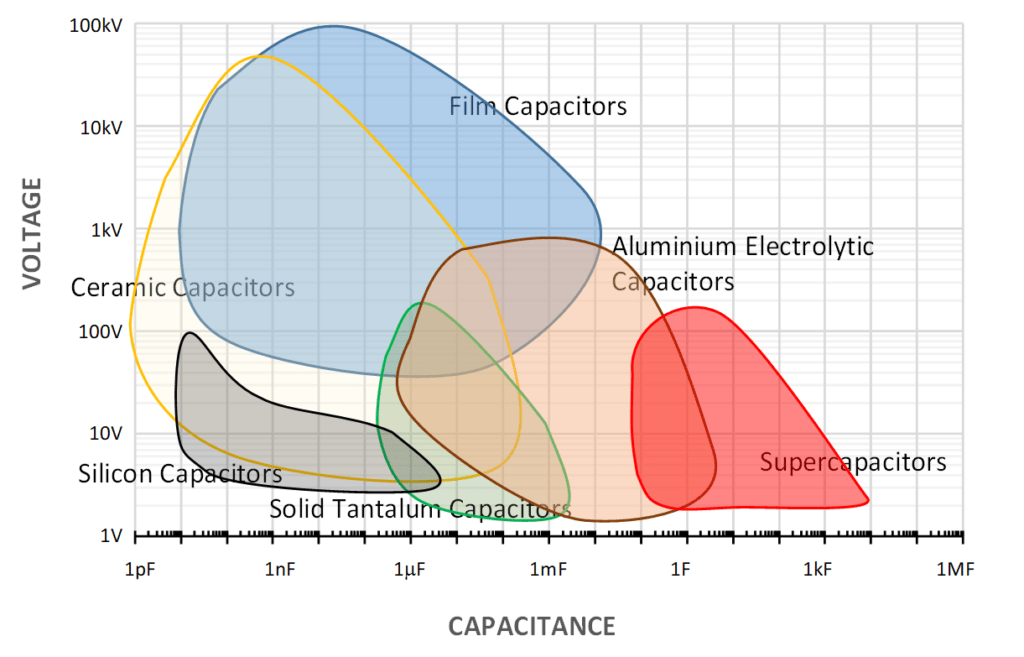
The amazing fact about capacitors today is that they cover over 17 ranges ! of its main parameter – CAPACITANCE this hardly achieved by any other components technology.
Applications – What is it good for ?
Capacitors are common elements in electrical circuits with number of applications and different requirements such as:
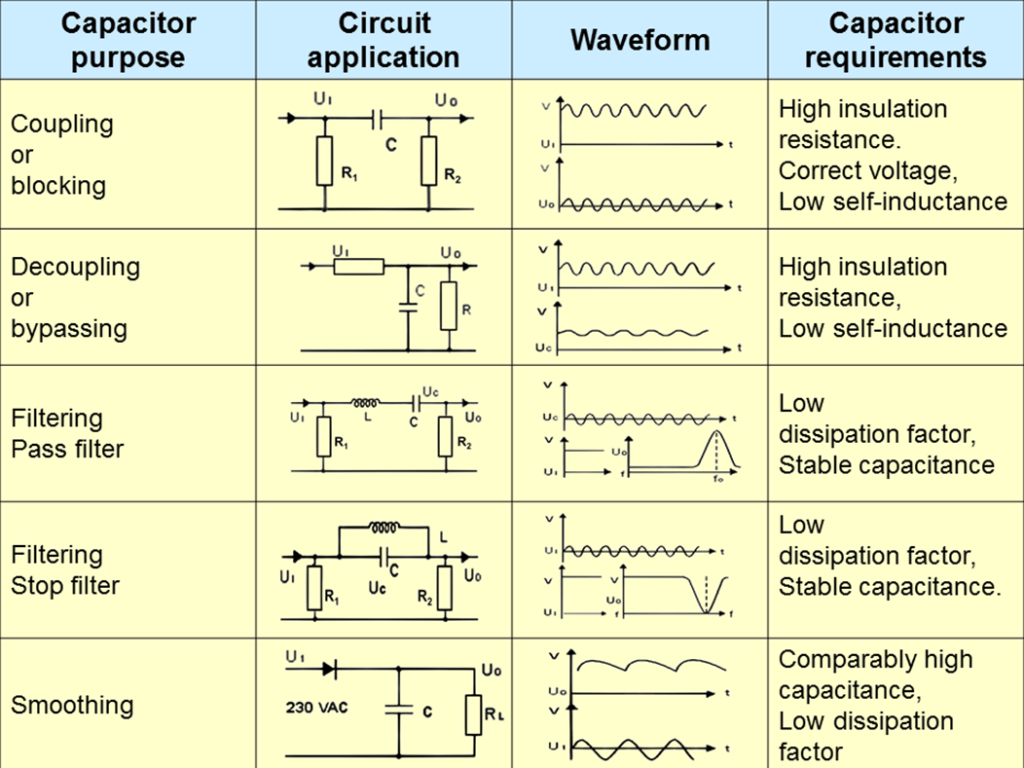
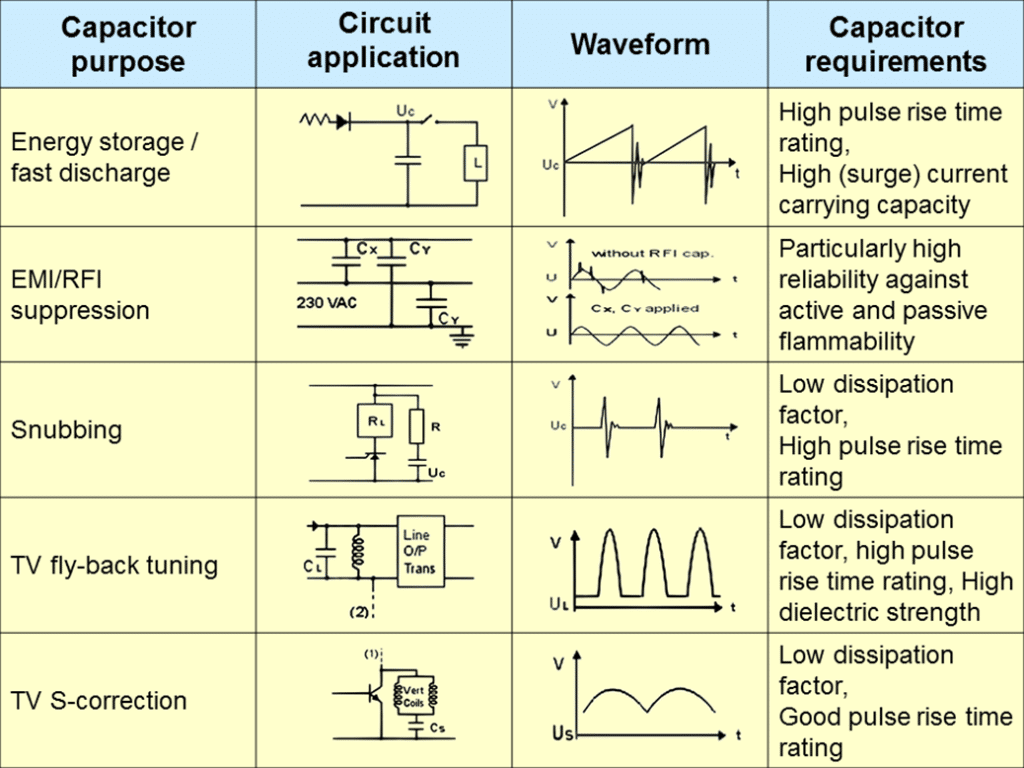
Here are further links with more insights about the capacitor circuit function and its selection guide:
- Bypass Capacitors: Providing clean power to devices by filtering noise and suppressing transients on supply lines.
- Decoupling Capacitors: Isolating sensitive components from noise by storing and releasing energy to maintain steady supply voltage during transients.
- DC-Blocking Capacitors: Preventing unwanted DC offsets from corrupting the AC or RF signals in these systems.
- DC Link Capacitors: acting as buffers that smooth power delivery and minimize ripples.
- Safety Capacitors: Protecting circuits and mitigate energy hazards in high-voltage systems.
- EMI Filters: suppressing electromagnetic noise generated by switched-mode power supplies, motor drives, and other electronics.
- Snubber Capacitors: Absorbing voltage spikes, limiting over-voltages.
- Resonant Capacitors: Leveraging this resonance to oscillate at specific frequencies, storing and releasing energy.
- Flying Capacitors: Transferring charges between different voltage potentials in multi-level power inverters.
- Bootstrap Capacitors: Enabling efficient high-side switching in half-bridge and full-bridge power converters.
- Power Back-Up and Load Management: Capacitors in battery-powered devices provide backup power in the event of disconnection or supply alternating current (AC) voltage for devices with heavy switching currents.
- PFC Power Factor Correction Capacitors: Power factor correction circuits are used to minimize reactive power and enhance the efficiency with which inductive loads consume AC power.
Basic Charge Storage and Discharge
When connected to a direct current (DC) voltage source, capacitors charge almost instantaneously, but they can discharge just as fast if shorted; however, with some resistance in place, the rate of charge and discharge is exponential rather than direct (Figure 3).
Oscillators, waveform shapers and low-discharge power backup circuits are examples of electronics that leverage controlled charge and discharge rates.
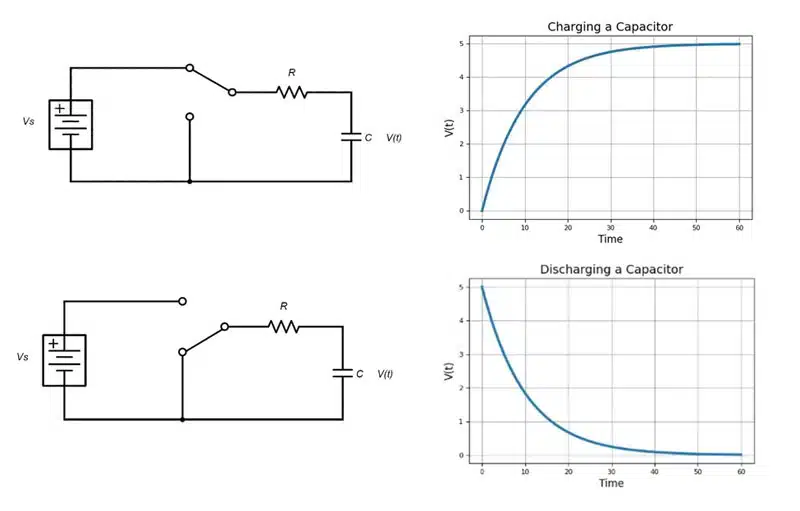
Bypassing and Low-Pass Filtering
When placed in parallel with a signal path, capacitors take on a bypassing function. They allow DC to continue along the wire, but they divert high-frequency signal components to ground. In other words, capacitors play a role in low-pass filters, offering a low-impedance path for high-frequency signals to ground. In an RC low-pass filter (Figure 4), impedance decreases as frequency increases, so the ratio of VI to VO depends on the value of R, C and the signal frequency. When signals are low frequency and high impedance, energy goes to the output. When signals are high frequency and low impedance, energy is sent to ground.
Frequency cutoff for an RC low-pass filter is expressed as:

Coupling and High-Pass Filtering
When placed in series with the signal path, rather than in parallel, capacitors take on a different bypassing role. In this arrangement, they block DC while allowing AC signals to pass through the circuit. This function is called DC blocking or AC coupling.
The frequency cutoff for an RC high-pass filter is the same as for a RC low-pass filter:

In Figure 5, low-frequency signals see an impedance that is higher than R, so they go to ground. High-frequency signals see an impedance lower than R, resulting in a high-frequency output.
Smoothing Circuit
As mentioned, controlled capacitor charging and discharging serves multiple uses in electronics. For example, a full wave rectifier can use a capacitor to smooth rectified DC pulses and produce a more consistent DC output with less ripple (Figure 6).
The blue DC pulse is the result of a 60Hz AC signal at 10V root-mean-square (rms) passing through a rectifier. The smoothing capacitor charges at the top of each pulse and discharges until the next pulse rises, when it recharges the capacitor. The output across the load is noted in green on the plot.
Timing and Waveform Shaping
A discussion of timing and waveform shaping is best with context. Here, we’ll use an RC relaxation oscillator (Figure 7). In these circuits, the voltage across the capacitor relaxes toward a time-varying target voltage.
The capacitor is charged through a resistor and discharged when it reaches a certain threshold value, and this cycle repeats continuously. An amplifier, wired with positive feedback, controls the charging and discharging of the capacitor by acting like a switch triggered by the voltage threshold. The amplifier is also responsible for providing gain to the oscillator to maintain the oscillation. Figure 7 shows the switching behavior of the square wave output. Charging and discharging is represented by the blue waveform.
Further read:






